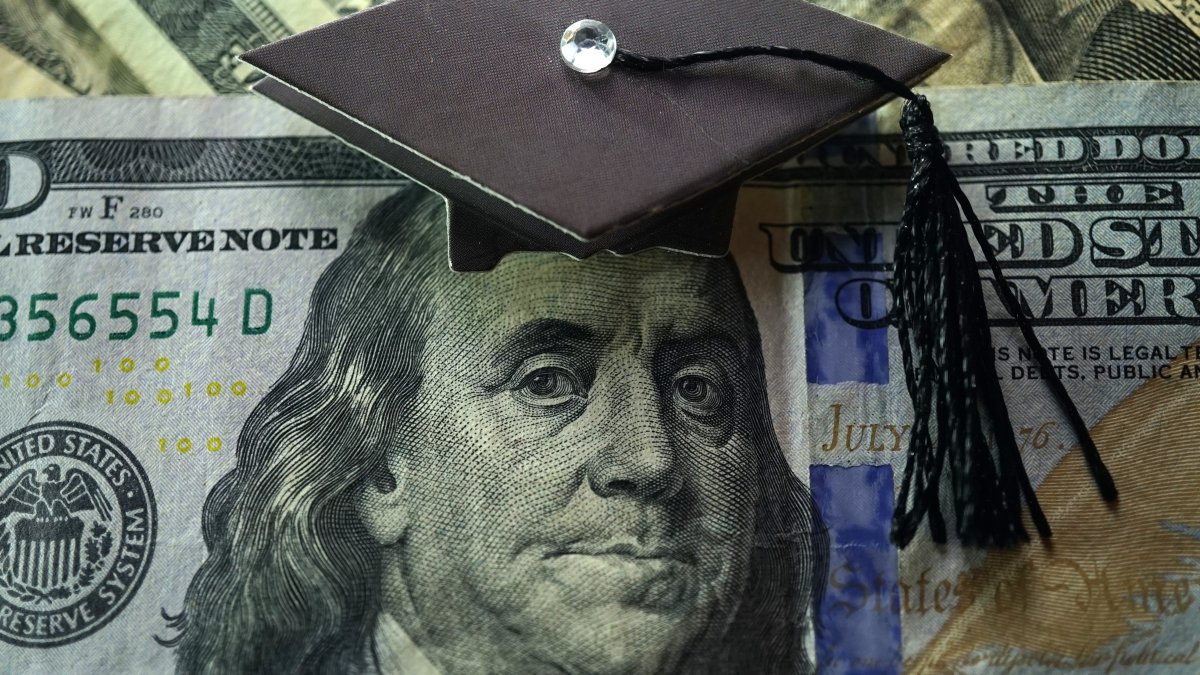What you should know
- Gabriel Quezada, 17, is on track to complete one to two years of college courses by the end of his secondary education in June.
- The Californian teenager attends an “early” program, which allows students to take college-level courses, often through a local community college, at little or no cost.
As college costs skyrocket and enrollment declines, there is an alternative to an expensive four-year degree that has been largely under the radar, until recently.
But Gabriel Quezada, 17, was hesitant to try.
His father, Humberto Quezada, said he first heard Start of secondary school in Costa Mesa, California when Gabriel was in third grade. But when Gabriel grew up, it was hard to convince him to go. So they made a deal: Gabriel would start in first grade, but if he didn’t like it, he could transfer to the local public school.
Learn more about personal finance:
Early College programs are a type of dual enrollment that allow students to take college-level courses while still in high school.
In the end, Gabriel endured. In June, he will graduate from high school and have an associate’s degree in business under his belt. “That’s about 60 credits completed,” he said.
He’s already been accepted to the University of California, Los Angeles and half a dozen other schools, but he’s still awaiting various scholarship opportunities, including one from the Los Angeles Baseball Foundation, which would cover all four years of studies. “Hopefully I won’t have to take out a lot of loans or no loans at all,” he said.
Taking a few classes at a community college and then transferring to a four-year school is a proven route to earning a degree for a lot less money.
After two-year college enrollment plummeted during the pandemic, many students are now catching up, according to a new report from the National Student Clearinghouse Research Center, which showed an increase in double enrollment.
“It’s encouraging to see this second straight year of growth in freshmen and high school dual enrollments,” said Doug Shapiro, executive director of the research center.
How Early College Programs Work
Unlike Advanced Placement, another program in which high school students take courses and tests that could earn them college credit, Dual Enrollment is a state program that often works in partnership with a local community college.
These programs are not reserved for high school students following a specific and often accelerated academic path, as many AP classes are.
Not all students complete high school with an associate’s degree, but most complete with at least one year of college credit, which gives them the opportunity to enter college as transfer students.
At least 35 states have policies ensuring that students with an associate degree can transfer to a four-year public school as a junior.
This cuts the cost of a bachelor’s degree by two years, cutting the bill in half, as well as student loan debt.
According to a study by the American Institutes for Research, early college students are also more likely to enroll in college and graduate than their peers who were not enrolled in early college programs.
“Our research shows that early colleges are an effective way to increase college attendance and completion rates, and that the return on investment in these programs is positive for both the student and society in as a whole,” said AIR Principal Investigator Kristina Zeiser.
Although there are as many as 900 early college programs across the country, according to Zeiser, few people know about them.
“A very smart way to start your higher education”
“The culture is different than your average high school,” said David Martinez, principal of Early College High School.
The high school is a Title I school in the Newport-Mesa Unified School District of Orange County, California, which means it has a high percentage of low-income students. Funds are provided by the district and the state. “Parents don’t pay a dime,” Martinez said.
Students take a combination of high school and college courses, reducing the time it takes to earn a high school diploma and one to two years of college courses.
“Families need a 21st century approach to preparing their kids for college, and this is one way to do it,” Martinez said.
Nearly two-thirds of dual-enrollment students at community colleges nationwide came from low- or middle-income families, according to a previous study by Columbia University’s Teachers College.
Of these students, 88% went on to college after high school, with the majority graduating within six years.
“It’s a very smart way to start your college education,” said Martha Parham, senior vice president of public relations for the American Community College Association.
Over four years, early college programs cost about $3,800 more per student than traditional high schools, according to another AIR study.
However, the estimated return on this investment is almost $34,000 in increased lifetime earnings.
“Getting an associate’s degree for free can really put you on a path where everything feels more doable,” Zeiser said.
This article It was originally published in English by Jessica Dickler for our sister network CNBC.com. For more on CNBC, head here.

